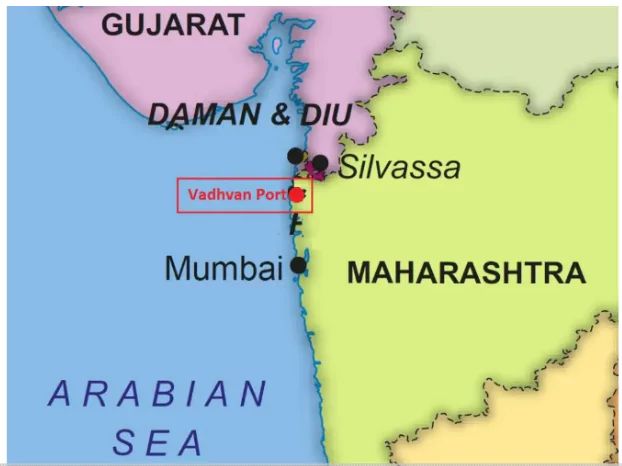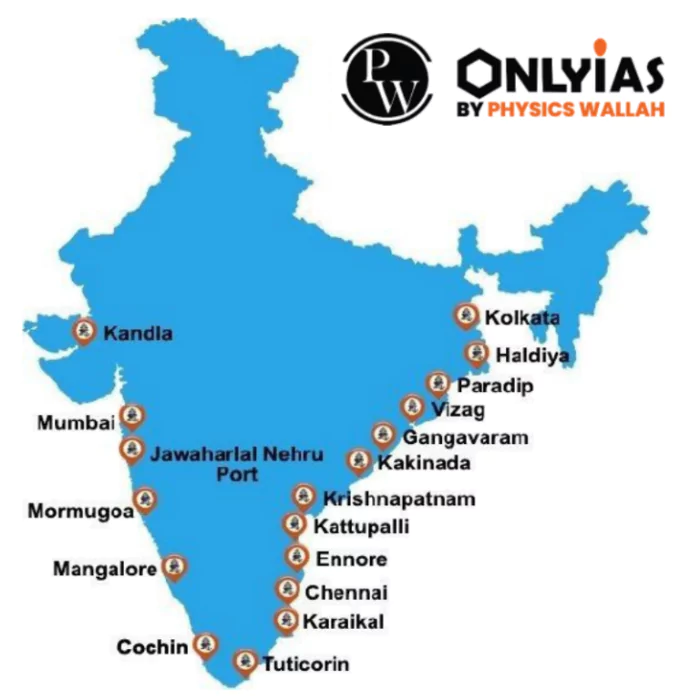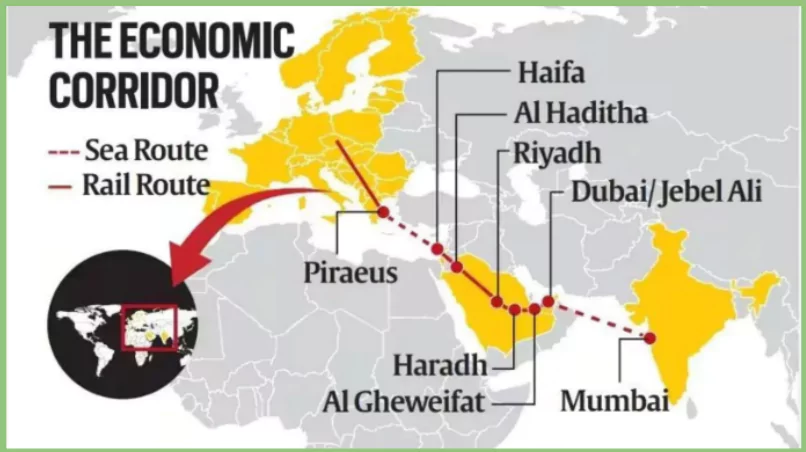The Vadhavan port, recently cleared by the Cabinet, will be India’s first mega port.
Objective of Vadhavan port
- It aims to significantly enhance the country’s sea-based trade.

About Vadhavan Port
- Vadhavan Port Location: Vadhavan, Palghar district, Maharashtra
- Coast: Arabian Sea
- Operated by: Vadhavan Port Project Limited (VPPL), Jawaharlal Nehru Port Authority
- This port initiative aligns with the PM Gati Shakti program
- Greenfield Project: The port will be built as a greenfield project.
- It allows for modern infrastructure and technology integration from the ground up.
- Public-Private Partnership: The project will leverage public-private partnerships (PPPs) for core infrastructure, terminals, and commercial development, potentially bringing in expertise and efficiency.
Enroll now for UPSC Online Course
Significance of the Vadhavan Port Project for Indian Economy
The Indian government’s approval of the Vadhavan Port Project represents a major development for the country’s maritime infrastructure.
- Increased Capacity and Efficiency:
-
- Mega Port Status: Vadhavan will be India’s first mega port, capable of handling massive cargo volumes and accommodating the largest vessels like Capesize ships.
- It will have a total capacity of 298 million metric tonnes (MMT) per year, including about 23.2 million TEU of container handling capability.
- Reduced Congestion: The new port will significantly alleviate pressure on existing ports, particularly the Jawaharlal Nehru Port Authority (JNPA), which currently handles a large share of India’s containerized cargo traffic.
- Strategic Location and Connectivity:
-
- Gateway to International Corridors: Vadhavan’s location positions it as a crucial link for the International North-South Transportation Corridor (INSTC) and the India-Middle East-Europe Corridor (IMEEC).
- It facilitates smoother trade flow and improves trade efficiency.
- Economic Growth and Job Creation:
-
- Boost to EXIM Trade: The increased capacity and strategic location are expected to significantly benefit India’s import and export trade.
- Employment Opportunities: The project is estimated to generate direct and indirect employment opportunities for around 12,000 people.
Industry Scenario, Port Sector

Overview of Indian Ports
- Total Ports: 12 major and 200 non-major/intermediate ports
- Major Ports: Under central government
- Non-Major Ports: Under state government administration
- Leading Ports in India
- Largest Major Port: Jawaharlal Nehru Port Trust (JNPT)
- Largest Private Port: Mundra Port
- Significant Milestone: JNPT becomes the first 100% Landlord Major Port
Challenges Faced by the Indian Port Sector
- Outdated Infrastructure: Many ports lack modern equipment and the water depth (draft) is insufficient to handle the largest ships. This limits efficiency and capacity.
- Limited Space for Expansion: Existing ports are crowded, making it difficult to increase capacity to meet growing trade demands.
- Poor Logistics Network: Inadequate roads and railways connecting ports to inland areas create delays and bottlenecks.
- Red Tape and Delays: Lengthy customs procedures and bureaucratic hurdles slow down cargo movement and increase turnaround times.
- Lack of Automation: Many ports rely on manual processes, hindering efficiency and accuracy.
- Environmental Concerns: Balancing port development with environmental protection can be challenging, leading to project delays due to impact assessments.
Check Out UPSC CSE Books From PW Store
Greenfield Project
- It is a project initiated from scratch, with no existing infrastructure, processes, or systems in place.
-
Characteristics
- New Development: Involves creating a new product or service from the ground up.
- Comprehensive Process: Includes design, development, and implementation stages.
- User Experience: Often involves creating a new user interface and user experience.
|
International North-South Transportation Corridor (INSTC)
- This corridor is a multi-mode network of ship, rail, and road routes.
 It increases transport connectivity between Russia, Central Asia, Iran, and India, boosting bilateral trade volumes. It increases transport connectivity between Russia, Central Asia, Iran, and India, boosting bilateral trade volumes.
India-Middle East-Europe Corridor (IMEEC)
|
![]() 25 Jun 2024
25 Jun 2024


